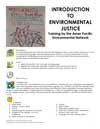 Introduction to Environmental Justice Introduction to Environmental Justice 
TRAINING CURRICULUM from the Asian Pacific Environmental Network (APEN) APEN has nearly 15 years of experience working with low-income Asian immigrant and refugee populations from the Laotian and Chinese in Oakland and Richmond, California, including elders, youth and women. Our organizing and advocacy manual documents APEN's leadership methodologies so that others may use it to organize their communities. This initial curriculum book focuses on healthy homes education tools tailored for API community-based organizations and their leadership. |
 |
 Joint Center for Political and Economic Studies Joint Center for Political and Economic Studies 
WEB SITE The Joint Center is the nation's only research and public policy institutions that focuses exclusively on issues of particular concern to African Americans and other people of color. Current research and analyses address critical issues in three key areas: political participation; economic advancement; and health policy.
|
 |
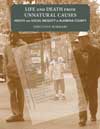 Life and Death From Unnatural Causes: Health and Social Inequity in Alameda County Life and Death From Unnatural Causes: Health and Social Inequity in Alameda County 
REPORT from Alameda County Public Health Department, California This report takes an in-depth look at health inequities and underlying social inequities in Alameda County based on local data. Part One describes the nature and magnitude of health inequities in the county. Part Two describes social inequities and proposes policies to address social inequities-the root causes of health inequities. Sections include: segregation, income and employment, education, housing, transportation, air quality, food access and liquor stores, physical activity and neighborhood conditions, criminal justice, access to health care and social relationships and community capacity.
Also see Alameda County Public Health Department Director Dr. Tony Iton's comment on press coverage of the study. |
 |
 Living at an Epicenter of Diabetes, Defiance and Despair Living at an Epicenter of Diabetes, Defiance and Despair 
NEWS ARTICLE in the New York Times, January 1, 2006 The second in a series of in-depth articles about New Yorkers living with diabetes, this article describes the epidemic of diabetes in low-income neighborhoods like East Harlem.
|
 |
 Living in Disadvantaged Neighborhoods is Bad for Your Health Living in Disadvantaged Neighborhoods is Bad for Your Health 
VIDEO EXCERPT, Unnatural Causes - Episode 5 Why is your street address such a good predictor of your health? Increasingly, Southeast Asian immigrants like Gwai Boonkeut are moving into neglected urban neighborhoods where African Americans have long suffered, and now their health is being eroded too. What can be done to create a neighborhood that promotes rather than destroys health?
|
 |
 Minority Health Resources Action Kit for Community Leaders Minority Health Resources Action Kit for Community Leaders 
TOOLKIT by the Minority Health Initiatives Department at Families USA The purpose of this Action Kit is to provide community leaders with the information, tools, and resources necessary to engage in health advocacy and improve the health and well-being of their communities. Sections of the toolkit place emphasis on the importance of public programs in reducing racial and ethnic health disparities. |
 |
 National Low Income Housing Coalition National Low Income Housing Coalition 
WEB SITE The National Low Income Housing Coalition is dedicated solely to ending America's affordable housing crisis. They believe that this is achievable, that the affordable housing crisis is a problem that Americans are capable of solving. While they are concerned about the housing circumstances of all low income people, they focus our advocacy on those with the most serious housing problems, the lowest income households. |
 |
 National Scientific Council on the Developing Child National Scientific Council on the Developing Child 
WEB SITE The NSCDC is a multi-disciplinary collaboration comprising leading scholars in neuroscience, early childhood development, pediatrics, and economics. Created to seize the opportunity that arose from response to the landmark report from the National Research Council and Institute of Medicine, From Neurons to Neighborhoods, the Council works to build strong, informed, bipartisan leadership in both the public and private sectors to close the gap between what we know and what we do to promote successful learning, adaptive behavior, and sound physical and mental health for all young children. |
 |
 Neighborhood Characteristics Associated with the Location of Food Stores and Food Service Places Neighborhood Characteristics Associated with the Location of Food Stores and Food Service Places 
SCHOLARLY ARTICLE by Kimberly Morland, et al. American Journal of Preventative Medicine This study examines the distribution of food stores and food service places by neighborhood wealth and racial segregation. It finds that, compared to the poorest neighborhoods, large numbers of supermarkets and gas stations with convenience stores are located in wealthier neighborhoods. There are three times fewer places to consume alcoholic beverages in the wealthiest compared to the poorest neighborhoods. Regarding neighborhood segregation, there are 4 times more supermarkets located in white neighborhoods compared to black neighborhoods.
|
 |
 Neighborhood of Residence and Incidence of Coronary Heart Disease Neighborhood of Residence and Incidence of Coronary Heart Disease 
SCHOLARLY ARTICLE, Ana Diez-Roux, et al, 2001 A peer-reviewed study finding that even after controlling for personal income, education, and occupation, living in a disadvantaged neighborhood is associated with an increased incidence of coronary heart disease. |
 |
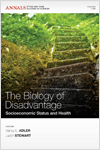 Neighborhoods and health Neighborhoods and health 
Ana V. Diez Roux and Christina Mair This piece summarizes key work in the study of neighborhood health effects with a particular focus on chronic disease outcomes (specifically obesity and related risk factors) and mental health (specifically depression and depressive symptoms). Empirical work is classified into two main eras: studies that use census proxies and studies that directlymeasure neighborhood attributes using a variety of approaches. Key conceptual and methodological challenges in studying neighborhood health effects are reviewed. Existing gaps in knowledge and promising new directions in the field are highlighted. |
 |
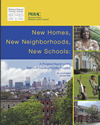 New, Homes, New Neighborhoods, New Schools: A Progress Report on the Baltimore Housing Mobility Program New, Homes, New Neighborhoods, New Schools: A Progress Report on the Baltimore Housing Mobility Program 
Poverty and Race Research Action Council This report describes and evaluates the ambitious voucher program that has enabled 1500 families living in highly segregated and disadvantaged Baltimore inner city neighborhoods to move to integrated, suburban "opportunity" neighborhoods. The initiative originated as a partial settlement of the public housing desegregation case, Thompson v. HUD and was launched in 2003. |
 |
People in Poor Neighborhoods Breathe More Hazardous Particles 
Scientific American Tiny particles of air pollution contain more hazardous ingredients in non-white and low-income communities than in affluent white ones, a new study shows. |
 |
 Place Matters - Episode Description (pdf) Place Matters - Episode Description (pdf) 
UNNATURAL CAUSES, Episode 5 Why is your ZIP code such a powerful predictor of your health? The show looks at some of the chronic stressors and environmental threats to health faced by the residents of Richmond, California, and look at how the community of High Point, in Seattle, Washington, attempted to address similar problems. |
 |
.jpg) Place Matters - Transcript (pdf) Place Matters - Transcript (pdf) 
UNNATURAL CAUSES, Episode 5 Why is your ZIP code such a powerful predictor of your health? The show looks at some of the chronic stressors and environmental threats to health faced by the residents of Richmond, California, and look at how the community of High Point, in Seattle, Washington, attempted to address similar problems. |
 |
.jpg) Place Matters - Transcript with Citations (pdf) Place Matters - Transcript with Citations (pdf) 
UNNATURAL CAUSES, Episode 5, Copyright Vital Pictures 2008 |
 |
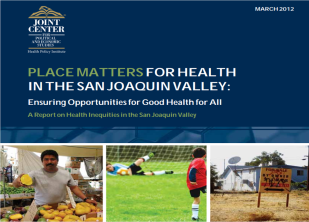 Place Matters for Health in the San Joaquin Valley Place Matters for Health in the San Joaquin Valley 
REPORT from Joint Center for Political and Economic Studies & San Joaquin Valley Place Matters Team, 2012 This study examines the relationships between place, race and ethnicity, and health in the San Joaquin Valley of California and attempts to address two specific questions raised by the San Joaquin Valley Place Matters Team: What is the relationship between social factors and premature mortality? What is the relationship between social factors and exposure to environmental hazards? |
 |
 PolicyLink PolicyLink 
WEB SITE PolicyLink is a national research and action institute advancing economic and social equity by "Lifting Up What Works." By developing and implementing multifaceted strategies, PolicyLink seeks to ensure that everyone—including low-income communities of color—can contribute to and benefit from local and regional growth and development. |
 |
 Prevention Institute Prevention Institute 
WEB SITE Prevention Institute is a non-profit national center dedicated to improving community health and well-being by building momentum for effective primary prevention. Primary prevention means taking action to build resilience and to prevent problems before they occur. The Institute's work is characterized by a strong commitment to community participation and promotion of equitable health outcomes among all social and economic groups. Since its founding in 1997, the organization has focused on injury and violence prevention, traffic safety, health disparities, nutrition and physical activity, and youth development. |
 |
 Public Education Network Public Education Network 
WEB SITE PEN is a national association of local education funds (LEFs) and individuals working to advance public school reform in low-income communities across our country. PEN believes an active, vocal constituency is the key to ensuring that every child, in every community, benefits from a quality public education. |
 |
 Racial Residential Segregation: A Fundamental Cause of Racial Disparities in Health (pdf) Racial Residential Segregation: A Fundamental Cause of Racial Disparities in Health (pdf) 
SCHOLARLY ARTICLE by David R. Williams and Chiquita Collins, Public Health Reports, 2001 The authors review evidence that suggests that segregation is a primary cause of racial differences in socioeconomic status (SES) by determining access to education and employment opportunities. SES in turn remains a fundamental cause of racial differences in health. Segregation also creates conditions inimical to health in the social and physical environment. The authors conclude that effective efforts to eliminate racial disparities in health must seriously confront segregation and its pervasive consequences |
 |
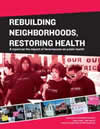 Rebuilding Neighborhoods, Restoring Health Rebuilding Neighborhoods, Restoring Health 
Alameda County Public Health Department and Causa Justa ::Just Cause This report examines the many pathways by which foreclosures are taking a toll on individual and community health. The consequences of the foreclosure crisis spreading most rapidly in low-income communities of color extend well beyond individual families being forced to leave their homes. Neighborhoods pockmarked by vacant housing are struggling with increased crime and violence. Social bonds are broken as families leave the neighborhood, leaving the entire community less prepared to deal with problems. School stability is threatened as families are forced to move out. The report highlights the health impacts of foreclosure and offers strategies to reduce or eliminate foreclosure's negative health outcomes. |
 |
 Reducing Health Disparities Initiative Reducing Health Disparities Initiative 
WEBSITE by Contra Costa Health Services CCHS has a department-wide goal to reduce health disparities by addressing issues of diversity and linguistic and cultural competence. Their site contains community health indicators for Contra Costa County, information on the county's five-year plan, and promising practices for cultural competence. |
 |
 Richmond California Struggles for Clean Air Richmond California Struggles for Clean Air 
WEB-EXCLUSIVE VIDEO, Unnatural Causes Community activist Torm Nompraseurt leads a "toxic tour" of Richmond, California where high levels of industrial pollution are wreaking havoc on the health and wellbeing of residents.
|
 |
 Seattle Healthy Homes Project - Healthy Homes II Asthma Project Seattle Healthy Homes Project - Healthy Homes II Asthma Project 
WEBSITE by the King County Asthma Forum Includes tools for community health worker programs, resources, and references to academic studies on the project. |
 |
| « Prev 1 | 2 | 3 Next » |




